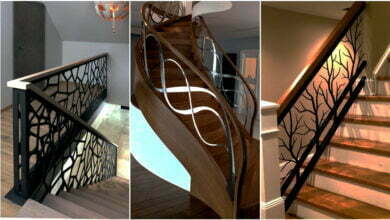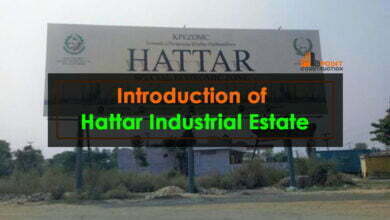Concept of Mobile Homes in Pakistan

Concept of Mobile Homes in Pakistan. In general, furnished houses/prefabricated homes are appealing and appealing because, in contrast to traditional construction methods, they allow for the construction of more sustainable and less expensive residences. The idea of planning a construction layout and then putting it together piece by piece is an old one. In ancient times, the Romans employed prefabricated components to construct fortifications on the lands they conquered. A New big Concept of Mobile Homes in Pakistan.
In the twenty-first century, the term “prefabricated home” refers to three different types of housing:
Table of Contents
Concept of Mobile Homes in Pakistan
1. Manufactured homes:
There are three sizes of manufactured homes: single, double, and triple-wide. The number of sections in the house is shown here. Manufactured homes are built at a remote home building on a steel frame and then transferred to the permanent foundation site.
2. Modular homes:
Modular homes to multi-section constructions are also built off-site. The sections are not assembled until they arrive at the final construction site. The materials utilized to construct these buildings are the same as those used to construct traditional dwellings. They can be arranged, stacked, end-to-end, or side-by-side once they’ve been assembled. Some parts of the building may be included in the module section. These houses can be enormous, customizable, and unique in design.
3. Mobile homes:
Mobile homes are really just mobile. They have wheels and can be dragged by a vehicle, in other words. This is where the majority of little houses fall. Mobile homes are constructed in a regulated environment. There is no final destination because they are still on wheels. They become personal property rather than actual property in this manner (housing). A New Concept of Mobile Homes in Pakistan.
Prefabricated houses are a relatively recent concept in Pakistan. The launch of the Naya Pakistan Houses Program (NPHP) has drawn a slew of international investors and construction firms to build low-cost housing for the poor. PM Imran Khan has started the “Prefabricated Housing Project” with the Chinese envoy in Islamabad, according to the latest update. In Pakistan’s construction industry, prefabricated houses are the next big thing. People can now register for the Naya Pakistan Housing Program online through the Naya Pakistan Housing Scheme Portal, as the program moves into its implementation phase.
4. Defining Prefab Homes:
Since its inception, the concept of prefabricated dwellings has grown in popularity. It has become a viable option for people from all walks of life to purchase a home in any country, regardless of their financial situation or design preferences. When you hear the word “prefabricated homes,” often known as “prefab,” it refers to a form of building construction rather than a specific, precise house layout style. Prefabricated homes are constructed off-site and then transported and installed at their ultimate location.
Imran Khan discusses his plan to build Chinese prefab homes as part of the Naya Pakistan Housing Program. Construction of a prefab home typically takes 16 to 31 weeks, depending on the skill level of the workers, design, and other considerations. Though it may take three to four months to assemble a prefabricated house, it will take three to four years to construct high-rise apartments utilizing prefabricated housing technologies.

Advantages of Mobile Homes in Pakistan
1. Environmentally Friendly:
The fact that prefab homes are environmentally friendly is the fundamental reason for their popularity. Traditional construction methods necessitate the purchase of materials in bulk, which raises the rate of waste. The manufacture of prefabricated houses takes place in a controlled environment within the factory’s premises. As a result, the majority of the material that is no longer in use gets recycled. Furthermore, because prefabricated home components are created in a controlled environment, they enable superior air filtering and faster assembly. It also allows for improved wall insulation, resulting in a more energy-efficient home.
2. Affordable:
You can save a lot of money by building a modular home. Large-scale housing initiatives, such as the Naya Pakistan Housing Program, use prefabricated dwellings. The construction material suppliers offer bulk discounts to the makers. In the construction of prefab homes, there is no need to hire contractors or laborers. This saves a significant amount of money.
3. Easy to Transport:
Prefabricated houses are not only versatile in design, but they are also conveniently transportable, making them a breeze to relocate. This saves time and money by eliminating the need to purchase raw materials, transport them to the construction site, and start from scratch. Prefabricated construction units are also used in many spaces, with neutral colors and styles that blend in well with any environment.
4. Lesser Construction Time:
The most significant benefit of prefabricated homes is the amount of time and work they save. Henan D.R Construction, a Chinese corporation, has opened a plant in Pakistan to expedite the construction of large housing complexes. It will not only save time but will also greatly assist the Naya Pakistan Housing Program.
5. Minimal Site Disruption:
Even if the majority of the building components are manufactured in a factory setting, we must have seen that heavy gear and equipment are used on a construction site. On the other hand, when constructing a prefabricated home, there is less air or noise pollution, waste, and other issues. Furthermore, the routines of those who live near these units are not affected. Similarly, the ratio of risks and construction hazards in the hands of the workforce is greatly reduced.
Conclusion
Mobile houses are a cost-effective and high-quality alternative to a built home. It’s crucial to remember, however, that they have some drawbacks when compared to stick-built homes. In each region, laws governing mobile home value, expenses, and low-cost stick-built alternatives vary. As a result, your study must be thorough.
A disadvantage of purchasing a mobile home is that its value depreciates rapidly over time. When a new mobile home leaves the factory, its value depreciates, much like a car. Stick-built homes, on the other hand, have a higher market value over time. Why? Because the underlying land is owned by the homeowner.
A person who owns both the property and the mobile home may be able to see both appreciate in value. The value of the underlying land is more likely to increase over time than the value of a mobile home.
The fact that mobile homes are personal property rather than real property is one of the main reasons for their depreciation. Real property is simply land and/or anything permanently tied to it. Stick-built dwellings are regarded as real estate. Real property is everything that can be removed without causing “harm” to the land. Personal property, on the other hand, is anything that may be moved from one location to another.
Due to the fact that mobile houses are difficult to remove from the ground, they are nonetheless considered personal property. However, in many areas where a person owns both types of property, the mobile home can be converted to real property by taking certain measures.





